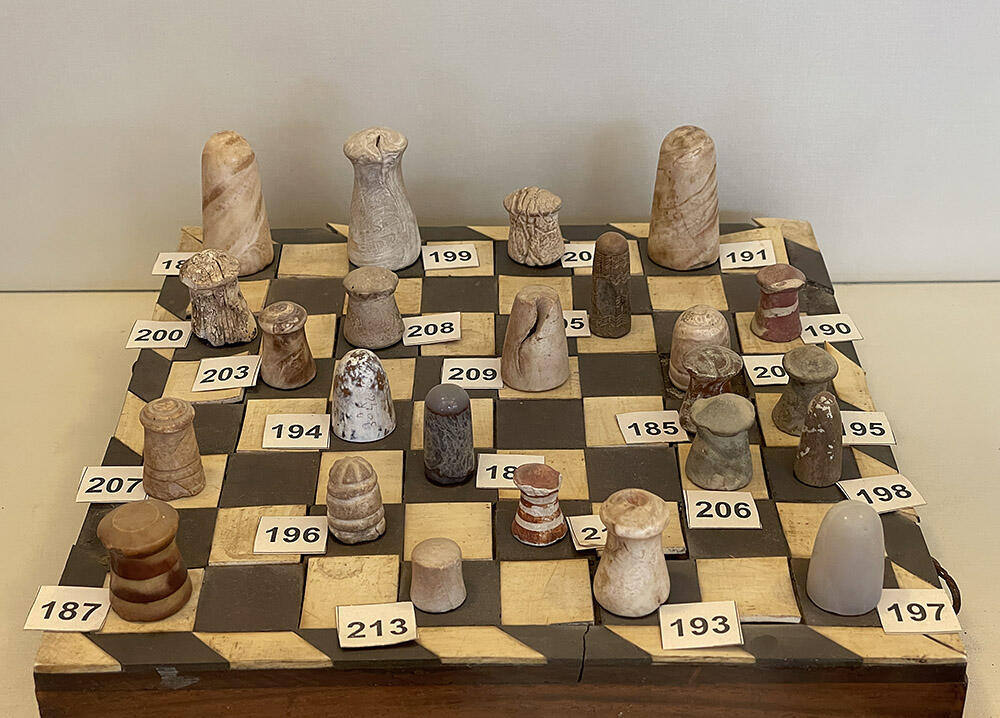A wide variety of game pieces from Mohenjo-daro on a modern wooden board.
Sir John Marshall, one of the earliest excavators at Mohenjo-daro writes in the monumental work summarizing the first finds at the site (Mohenjo-daro and the Indus Civilization, 1931, pp. 557-58):
"That some form of game or games played with pieces was common at Mohenjo-aaro Board-games is proved by the great number of gamesmen that have been found.4 The materials of which these pieces are made are comparatively few. In order of popularity they are faience, pottery, shell, marble, agate, slate, and steatite."
"No. 11 in PI. CLV is made of black marble and comes from Room 88, Block 9, L Area. No. 12 is beautifully made of agate, and was unearthed in the chamber south of No. 1, Block 8, Section C, DK Area. No. 13 is of faience and was found in House XXIII Block IV, VS Area. No 14. is faience, and comes from the chamber west of No. 2, House XIII, Block 4, Section B DK Area. No. 16 is made of green slate and comes from House X, Block 2, VS Area. No. 18 is well made in faience and was taken from Block 2 of the Southern Buildings section. Nos. 19 and 20 are of faience; the former was found in Chamber 18, House IV, Block 2, Section B, DK Area. No. 21 is pottery and came from Room 59, House LIX, Block 8, HR Area. No. 22 is cut from a piece of agate, and nos. 23, 24, and 25 are made of pottery. Of the last three, No. 23 was found in House XVI, Block 2, VS Area, and No. 24 came from Chamber 6, Block 2, Section C, DK Area.
"Nos. 23, 24, and 26 are especially interesting in that they are decorated. The first two are coloured white and red, evidently with the idea of imitating decorated carnelian. The third is more elaborate still; it is painted in red and black on a cream ground, the hatched lines in the illustrations denoting red. Its base is slightly concave. No. 21, also of pottery, is painted dark brown to imitate some kind of bone."
The National Museum's caption reads:
"The indoor recreations show that the inhabitants had a sense of contentment and security and possessed the traits of gregariousness and sociability, controlled by an implicit code of ethics. The most favourite game was played with gamesmen (chessmen) on segmented boards which looked like the present day game of chess. The gamesmen found a variety of materials like faience, shell, terracotta, marble, agate and steatite. The games-board with gamesmen also found in the excavations of Ur a Sumerian City State of ancient Mesopotamia and Memphis in Egypt.
"Another favourite game was played with cubical and tubular dices of terracotta, bone ivory & alabaster. They are generally numbered 1opposite 2, 3opposite 4&5opposite 6. Yet another game popular with the people was the game of chance. It was played with square, rectangular casting sticks marked with incised lines and concentric circles."

